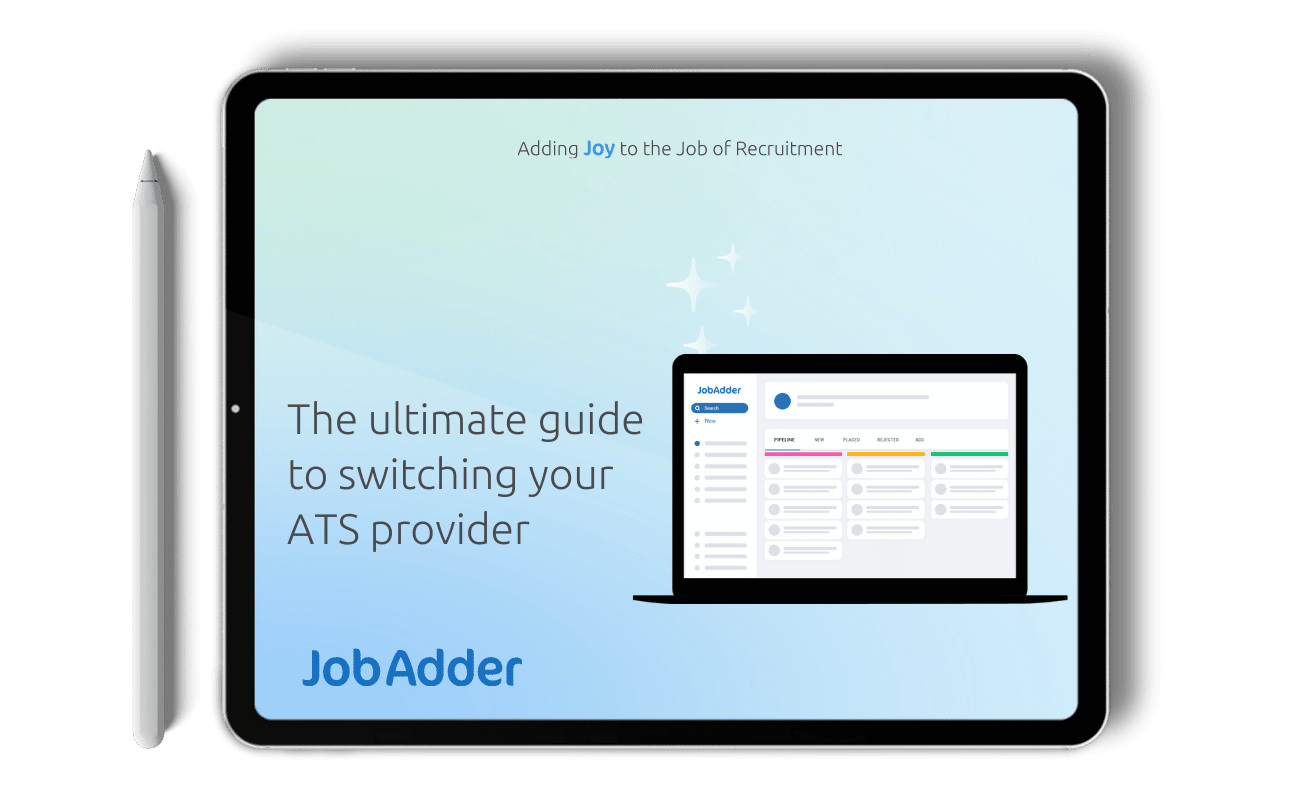Recruitment Blog
Your 5-step guide to building a business case for an ATS

Over the past four years, I have seen a huge range of issues that talent acquisition teams experience when trying to purchase and implement a new applicant tracking software (ATS).
Every organisation is different, with varied purchasing processes, expectations and stakeholders.
Despite this, building a solid business case for an ATS applies to nearly every organisation, so the purpose of this blog post is to help you plan and present your case for purchasing new recruiting technology.
DOWNLOAD OUR FREE EBOOK: The ultimate guide to switching your ATS provider
1. Planning
I love the phrase, “failing to plan is planning to fail”, and it’s true in this case too.
When you start your business case, jot down who the stakeholders are, and who will need to be involved in your purchasing process. Usually, it starts with yourself and your colleagues in the talent acquisition team and the Human Resources Director, and may involve finance, legal, marketing and IT.
When you talk with them, get an understanding of what their requirements are, so that you can let prospective vendors know from the outset. A misalignment in expectations between stakeholders is a sure-fire way to kill off a project!
The big thing is budget. A good business case will help you to answer any budget objections, so understanding where the budget comes from, and any spending restrictions you have, will help you speed up the process.
2. Understanding the WHY?
Why are you even doing this in the first place?
Implementing new recruiting technology will offer you a myriad of benefits, so start off by documenting your pain points, and what you think these pain points are costing the organisation in terms of money and time.
Also, have a think about the quality of hire (surely the most important metric) and the data that an ATS will provide you with to help you improve your key performance indicators. What are your objectives? For example, do you want to reduce agency spend, speed things up or improve the candidate experience? Once you start documenting the current process and its bottlenecks, you’ll be surprised by just how much room there is for improvement.
This process then leads to your requirements list, which can be as simple as five lines, or a multi-page spreadsheet with 300+ questions (yes it does happen). Generally speaking, a good solid one pager outlining the issues, and why you need a particular feature to solve it, is all you’ll need.
3. Now onto WHO?
Now that you have a clear understanding of the main problems to solve and the features you need to solve them, you can start talking to vendors.
Globally, there are over 300 ATS enterprise platforms to choose from, but I strongly recommend talking to your local or regional options first. These vendors should have locally focused integrations, such as in-country job boards and connections with other localised tools like onboarding and payroll systems.
Your friends and colleagues in the industry should have some ideas for you, and if not, find someone you know that understands the industry and see if they can recommend a shortlist for you.
The vendors at this point will typically move into a discovery phase (understanding what problems you need to solve, and can their solution solve it?), followed by a product demo (or two…) and then onto the negotiation and implementation.
Use this discovery and demo process to really probe the vendor about how their specific features will solve your problems, and in the live demo itself, be absolutely sure that what they are showing you will work in your environment.
Have a list of questions pre-prepared and ask all of the vendors the same questions to ensure consistency. Don’t be afraid to ask and ask again if need be, you NEED to see it work properly, and make sure the relevant stakeholders are all present in the demo.
4. Collate and compare
By now, you have run through an evaluation stage with 2-3 vendors and you should have enough detail to build a good comparison chart. That chart should include:
- Your pain points and whether or not the vendor can solve some/all of them.
- Details on the implementation process (how long and how difficult, and who is involved)
- Pricing, and any additional fees/third party products, vendors will likely have an upfront capex cost, along with a monthly opex cost, so work out what the total annual cost of each vendor is
- Team notes and any “red flags” that you picked up during the process
You could also use a scorecard system that rates the importance of the pain point, and the potential value of the solutions being presented.
5. Present your business case
At this stage, you are well and truly armed with all of the information you need, and should have a good understanding of the local ATS market.
Whether your final decision makers are in finance, the C-suite or in human resources, make sure your business case focuses heavily on ROI.
This is where you analyse the cost of your problems (time or money), and the value the vendor will create for you in solving them. An example might be:
- Paper-based manual processes = Takes 10 minutes to process each candidate
- As a result, 200 candidates per month = 2000 minutes of time (33.3 hours) = More costs
- Therefore, a new ATS will reduce processing time to 30 seconds per candidate, which means you save 30+ hours per month
I recommend keeping this process to just a few slides, but by focusing on the ROI, it will make more sense to all of the other stakeholders. Remember to include as many details as possible regarding implementation times and who will need to be involved at your end.
Finally, the benefits of following a robust evaluation process is an assurance that you are selecting the best possible solution for your business. The rest of the business will be thanking you for it. Good luck!
If you want to effectively streamline and automate time-consuming manual tasks, then you may want to take a look at our ATS (just to add a small plug at the end!).
Not sure what’s involved in switching your ATS? Download our step-by-step guide.

Related blog posts

By Melinda Jennings 2024 has been a big year for talent leaders. Candidate applications are at an all-time high – …
Ready to get started?
Talk to one of our friendly team members


